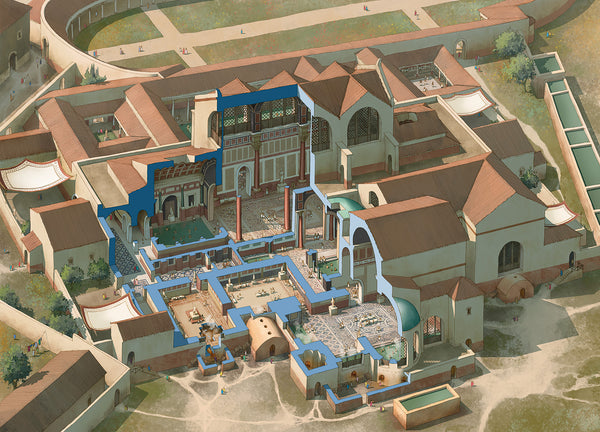Timeless Torcs: Beauty Across the Ages
By Sandra Alvarez
After two millennia, torcs have endured as timeless fashion statement. How were these simple, yet elegant, pieces worn, and what was their initial purpose?
Origins
The name Torc was derived from the Latin word torquis, which meant “to twist”, because many torcs were made of two entwined pieces of metal or wire. Torcs ranged in style and materials, and were decorated in ways that expressed the identity, and culture, of a particular region. Some torcs had terminals (end pieces) lavishly decorated with animal designs, or finished with stunning pointed tips, or elaborate swirls.

Torc with elaborate zoomorphic terminals. The British Museum. (Photo: Sandra Alvarez)
While they have often been associated with Celtic culture, torcs have been found in hoards all over Europe. They have been discovered in France, Switzerland, Spain, Scotland, and England, and were present in Scythian, Illyrian, Germanic and Scandinavian cultures. Torcs were popular from the eighth century BC to the third century AD, disappearing during the migration period and then reappearing during the Viking period. Iron Age torcs were usually bronze or gold, or a combination of the two, while Viking Age torcs were often made of silver.

Another style of torc: a single spiral piece of gold with blunt terminals. The British Museum. (Photo: Sandra Alvarez)
The Torc Travels...
How did this style become so prevalent across the continent? One idea put forward is that when metalsmiths travelled to sell their wares, they came across new designs. Inspired by these different styles, they then incorporated them into their pieces; fusing regional techniques with a foreign aesthetic. Another suggestion is that many torcs were purchased as gifts, and were traded over long distances. These two reasons could account for the vast number of differing torc types that were found far from their traditional region.

2300 year old gold torc and bracelet found in south-western Germany in the grave of a powerful woman. Waldalgesheim, Germany (340-300 BC). The British Museum (Photo: Sandra Alvarez)
Who Wore Them?
In Celtic culture, torcs were worn by important individuals to denote their high status. During the Iron Age, gold torcs were highly prized and were often worn by men, although Celtic torcs were initially thought to be jewellery reserved for women because they were often found in female burials. One such discovery was a 2300 year old grave in Waldalgesheim, Germany. A high status woman was buried with various grave goods ranging from a Greek wine bucket, a wooden chariot, bracelets and a stunning gold torc.
Archaeologists also attributed torcs to male warriors, but recent evidence found that torcs were worn by both men and women since the early Iron Age, not were not an exclusive object of any particular gender. Torcs were also adopted into Roman culture, imbuing them with their own unique style. They were worn by Roman warriors during the Republican period.
Lastly, torcs were not only decorative pieces of jewellery, but they were also used in sacred rituals, to decorate statues of deities, or for burials with high status individuals, as some were clearly weighed too much to be worn for extended periods of time.

Bronze torc that would have been too heavy to wear and was most likely used for religious ceremony or for a burial. The British Museum. (Photo: Sandra Alvarez)

